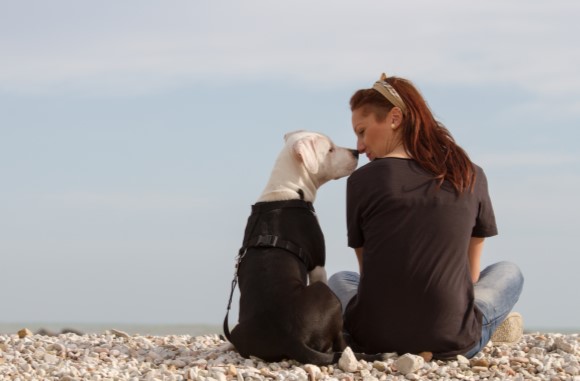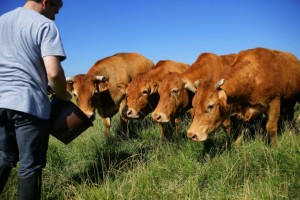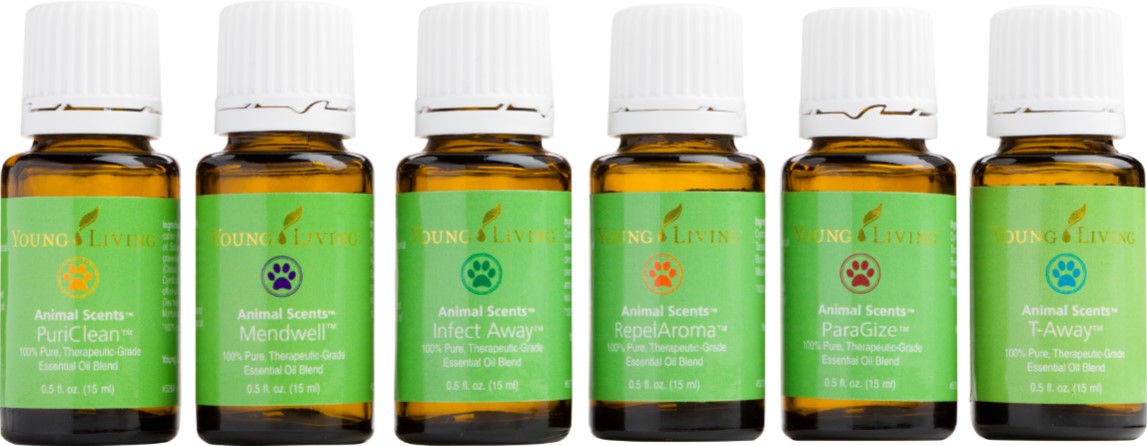For most pet parents, our animals are like our children and depend on us for everything . . . . food and water, grooming, shelter, and healthcare. That is why there is nothing worse than seeing them under the weather or in pain. Just as with any stressful situation, it is important not to panic and to stay as calm as possible. Animals sense our emotions, often through smell, therefore the best way to keep them calm is to make sure you are calm.
One of the biggest challenges a pet parent or animal caregiver can face in a moment of crisis or stress is trying to communicate with their animal. It is far easier to read an animal when that animal trusts you. You know your animal(s) better than anyone, therefore using common sense and your natural instincts can be very helpful.
When used properly and when keeping key facts in mind, essential oils are very effective in providing our animals with natural / holistic care that works! I personally keep several essential oils on hand that are perfect for animal first aid. Knowing what you have on hand, which oils are most effective for any given situation, and what amount and frequency is appropriate for each animal in your care is crucial.
* I will preface this next section by stating that the ONLY essential oils I use and recommend are Young Living Essential Oils, as they are 100% pure, therapeutic-grade and have been proven to be safe and effective time and time again. As a holistic consultant, energy healer, animal Reiki practitioner and lifelong pet parent, I only trust Young Living for my clients and my own animals, as well as for myself!
Guidelines For Proper Usage:
~ The key to using essential oils with animals is to always go very slowly! Do not rush and do not force them on your animals. Most animals will respond much better to essential oils if they are comfortable with you and with the various scents of essential oils. Also, introducing them slowly will avoid creating any negative experiences or promoting any adverse reactions to the oils. Animals are highly sensitive to odors and may find a new smell too intense in the beginning.
~ An aversion to essential oils may be a simple dislike to the oil (or oils). This usually occurs when an oil has been aggressively introduced or improperly used. For example, an animal's face, nose or feet are highly sensitive areas, therefore any new smells must be introduced slowly and carefully. Aversions can arise very quickly and may take a long time to overcome, so the more time and patience you use introducing the oils, the better.
~ Start with very small amounts of whichever oil is needed for the situation you are addressing. Keep in mind that when using 100% pure, therapeutic-grade essential oils from Young Living, one drop is usually plenty when you are just beginning. Until you are able to read your animals and see their reactions, make sure they are comfortable and do not exceed recommended amounts
~ Avoid using hot or irritating oils on your pets. If you are in doubt about comfortably using a particular oil on your animal(s), it is always best to err on the side of caution and find a suitable alternative using common sense and good judgment.
Please feel free to Contact Me should you have questions or wish to get started on your own amazing essential oils journey . . . . for your animals and for yourself!
You can also learn more about essential oils and shop for what you need here:
* * * * * * * * * * *
Raven is an engaging entrepreneur who encourages others to celebrate pets (and ALL animals) as part of the family, as well as keep them happy, healthy, and spoiled with her Holistic Healing, Animal Intuition, Aromatherapy, Animal Reiki (www.HolisticPetsAndPeeps.com & www.HealingOilsForAnimals.com), as well as her premium pet food business (http://www.PremiumPetFoodStore.com)
For more information, please visit her Facebook page to PM her (https://www.facebook.com/HolisticPetsNPeeps), or email her at HolisticPetsAndPeeps@gmail.com.









